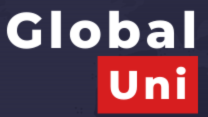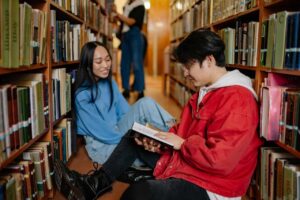Speaking with The PIE as the Task Force on Expanding United States-India University Partnerships, formed by the Association of American Universities, visited the country, the president of Tufts University reiterated a focus on the bilateral relationship.
“I would not term this collaboration as American universities helping Indian institutions but rather a bilateral relationship. For example, just like how Tufts has partnered with the Indian Council of Medical Research, you can think of these 69 AAU institutions as facilitators of research,” said Sunil Kumar.
Established in April 2023, the task force has been meeting regularly to discuss challenges in strengthening higher education and increasing scientific research.
Key points highlighted in a report released by the organisation in January included scaling up research collaboration and exchanges, as well as internships and apprenticeships.
“It’s been a productive trip in India. We met with government officials, and faculty members at IIT Delhi, IIT Bombay, IIT Hyderabad, the Indian Institute of Science, Bangalore, and a few other IIT directors to discuss STEM,” Kumar continued.
“Further research collaboration is expected between India and the US in AI”
“Further research collaboration is expected between India and the US in AI and its application in healthcare, with semiconductors also playing an important part in these discussions.”
The task force was created last year in line with the Biden administration’s U.S.-India initiative on Critical and Emerging Technology seeking to grow industrial and technological cooperation between two of the world’s largest democracies.
It comes as the Institute of International Education is sent its own delegation of 17 US colleges and universities to the country in a bid to “support broader bi-national efforts to increase U.S.-India collaboration and student and scholar mobility”.
“There has never been a more opportune time for higher education leaders in both India and the United States to join forces,” said IIE co-presidents Jason Czyz and A. Sarah Ilchman in a joint statement.
The delegation, which travelled in February, sought to build on IIE’s 60-year history in the region and “leveraging our deep ties in the public and private sectors to build and strengthen partnerships, help increase student and faculty mobility both ways, and contribute to research collaborations”.
As well as the US consulates, the IIE delegates will visit the Indian School of Business, IIT Hyderabad, Mahindra University, Narsee Monjee Institute of Management Studies and Somaiya Vidyavihar University.
IIE said the key topics to be discussed include setting up international branch campuses in India, edtech’s impact in Indian higher education and sector’s business landscape.
Kumar added that the AAU has around 70 institutions researching “on a larger scale compared to a smaller set in India”.
“This partnership could lead to anchor institutions on both sides encouraging the same,” he told The PIE.
“On the other hand, the US universities will also have an opportunity to learn how India conducted its Chandrayaan space missions for Moon exploration under a reasonable budget.”
With India spending a mere 0.7% of its GDP on R&D, AAU’s involvement could provide a major boost to research in Indian academia.
Apart from its aim to create the Indo-U.S. Global Challenges Institute, which will address areas of mutual interests, visa processing of Indian students and exchange visitors is also of priority to the AAU task force.
“The US ambassador has assured us that the backlogs have been cleared with Indian students now becoming the largest recipients of study permits from the country. So the issue is resolving itself,” noted Kumar.
More than 265,000 Indian students came to the US to pursue higher education in the 2022/23 academic year, constituting over 25% of the one million international students studying in the country. The latest stats an all-time high for the country.
With US president Joe Biden and former president Donald Trump set to clash again in the 2024 elections, and immigration reform being a hot-button issue, Kumar believes Indian students would be safe from any repercussions.
“Despite the elections, there’s bipartisan support for stronger relations with India,” he said.

Tufts University president Sunil Kumar travelled to India in February. Photo: Alonso Nichols/Tufts University
But as the US grapples with job losses in its tech sector, many STEM pursuing Indian students on Optional Practical Training permits might expect changes to the program, which provides a year-long employment authorisation.
A recent report by IIE revealed India is the number one place of origin with students on OPT at 69,062.
“As a first-gen immigrant in the US, I think the country benefits when it allows talented, well-trained people to contribute to its economy. I believe the US government should not be short-sighted in how they handle immigrant students, especially the ones in tech,” asserted Kumar.
Kumar’s visit to India in February 2024 was all the more special since it was his first trip to the country after assuming presidentship at Tufts in July 2023.
“Though [Tufts] gets a lot of students from India, we are relying on our alums and building up financial resources to support more learners from the country.
“Our priority is for students to achieve greater access and social mobility”
“We don’t want to restrict ourselves to UG students and wish to get introduced to doctoral and postdoctoral trainees from India due to the skills they possess,” said Kumar.
The Bangalore native said his “outstanding education” at IISc Bangalore changed his life.
“Our priority is for students to achieve greater access and social mobility, and create a difference not just during their time at Tufts but also post their studies. I want the students to have a life-changing experience at Tufts, not just with a job but which is something similar to my exposure at IISc,” stated Kumar.
“Our goal is to have more research output, which can find solutions to today’s pressing problems. For example, we are building strong facilities in synthetic agriculture through which meat and fish can be grown in labs while not needing land or water which can leave a huge impact on the world.”




